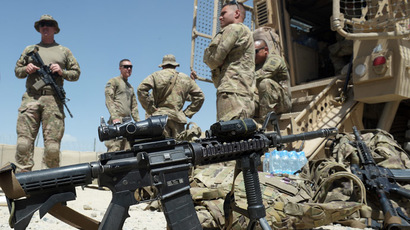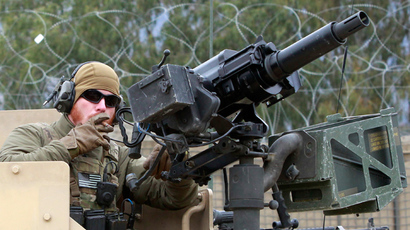CIA scales down Afghanistan operations amid troop pullout

The CIA is seeking to reduce the number of its Afghanistan bases of operation from a dozen to as few as six over two years, going with the overall American withdrawal. But even after 2014 it will maintain a significant footprint.
The manpower and equipment will be relocated from Afghanistan to other destinations, particularly Yemen and North Africa, places where Al-Qaeda-affiliated forces are presented, reports The Washington Post. CIA operatives would also be needed for operations not involving anti-insurgency, like the planned supplying of weapons to the Syrian armed opposition.
The agency’s presence in Afghanistan is already lower that the peak levels, when more than 1,000 CIA staffers were deployed there. In two years the US spies will maintain six major bases in the country – in Kabul, Bagram, Kandahar, Mazar-e Sharif, Jalalabad and Herat, the newspaper reports citing unnamed intelligence and administration sources.
“The footprint being designed involves six bases and some satellite [locations] out of those,” a former senior CIA officer told WP. The agency may also use temporary “mobile stations” manned by a small number of agents in remote locations “where they trust the tribal network,” he added.
But even after the drawdown is complete the CIA will keep its foothold in the country, which was key for its transformation from an espionage-focused organization of the Cold War era into the current paramilitary agency with its own fleet of killer drones, the report adds. The Kabul station will remain the largest the agency has and it will keep tabs with the Afghan intelligence services, which the CIA trained and funded over the decade.

The plans for redeployment of CIA drone fleet, which the agency uses for surveillance and targeted killings in Afghanistan and neighboring Pakistan, are yet to be finalized, the newspaper says. During the campaign the unmanned aircraft were launched from a heavily fortified military outpost in Jalalabad, but that may change as the Pentagon returns its troops home.
At the moment US officials want to keep the Jalalabad airstrip, to which the CIA moved most of its drones previously stationed in Pakistan as the opposition to the airstrikes mounted there. But transferring them to Bagram or Kandahar is also an option, the unnamed officials said.
Drone campaigns in Afghanistan and Pakistan would continue an additional 10 years or more, Mike Sheehan, the assistant defense secretary for Special Operations recently testified. The Obama administration voiced an intention to reverse the agency to its initial espionage role and leave drone strikes to the military.
But so far the CIA retains wide latitude to continue armed drone flights. Neither did it ban the controversial practice of “signature strikes” in which groups of unidentified people can be targeted on suspicion that they may be militants.
The Pentagon is expected to reduce the number of US troops in Afghanistan from 63,000 to about 10,000 by the end of 2014. The plan is not cast in iron and more radical variants, including a “zero option” are also on the table, especially as the US diplomatic engagement with the Taliban is causing increasing frustration from the outgoing Afghan President Hamid Karzai.














